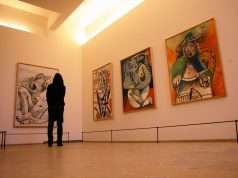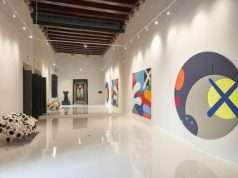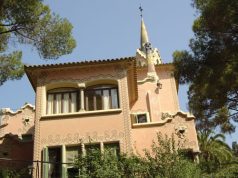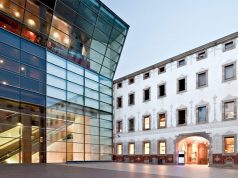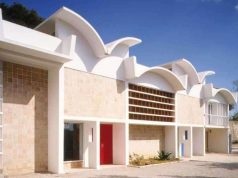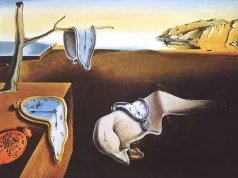Any one that prefers a cultural and artistic experience in Barcelona, you really should not miss the National Museum of Catalan Art (Museu Nacional d’Art de Catalunya or MNAC). This museum is located in the Palau Nacional of Montjuïc, a majestic building that was constructed for the International Exposition of 1929. The museum houses a rich and diverse collection of Catalan art, spanning from the Romanesque to the Modern periods.
The MNAC Museum is situated within easy walking distance from the Plaça Espanya. The Magic Fountain of Montjuïc is just in front of the museum, and comes to life most evenings. The National Museum of Catalan Art can be easily reached by metro, bus or taxi from Barcelona city center.
What to See in the National Museum Of Catalan Art
The museum has four main sections: Romanesque Art, Gothic Art, Renaissance and Baroque Art, and Modern Art. Each section showcases the artistic expressions of Catalonia and its historical and social contexts.
Romanesque Art
The amazing Romanesque section is one of the most impressive and unique collections of the museum. It features a large number of frescoes, sculptures, metalwork, and woodwork from the 11th to 13th centuries. The frescoes are especially remarkable, as they were carefully removed from their original locations in churches and chapels across the Pyrenees and restored in the museum. You can admire the vivid colors and expressive figures of these medieval paintings, which depict scenes from the Bible, the lives of saints, and the apocalypse.
Gothic Art
A Gothic section displays the artistic developments of Catalonia from the 13th to the 15th centuries. It includes works by some of the most renowned Catalan painters, such as Jaume Huguet, Bernat Martorell, and Lluís Dalmau. You can also see examples of stained glass, altarpieces, sculptures, and goldsmithing from this period. The Gothic section reflects the influence of different artistic styles, such as the Italian Renaissance, the International Gothic, and the Flemish School.
Renaissance and Baroque Art
The Renaissance and Baroque section covers the artistic production of Catalonia from the 16th to the 18th centuries. It features works by some of the most prominent Catalan artists, such as Pere Serra, Joan de Burgunya, and Antoni Viladomat. You can also admire paintings by famous Spanish and European masters, such as El Greco, Diego Velázquez, and Peter Paul Rubens. The Renaissance and Baroque section showcases the diversity and richness of artistic genres, such as portraits, landscapes, still lifes, and religious scenes.
Modern Art
The Modern art section presents the artistic movements of Catalonia from the 19th to the 20th centuries. It includes works by some of the most influential Catalan artists, such as Mariano Fortuny, Ramón Casas, and Joaquim Mir. You can also discover paintings by world-famous artists, such as Pablo Picasso, Salvador Dalí, and Joan Miró. The Modern section explores the different styles and trends of modern art, such as Realism, Impressionism, Modernisme, and Surrealism.

What Else to Do in the Museum
Besides admiring the artworks, you can also enjoy other activities and services in the museum. For instance, you can:
- Visit the temporary exhibitions that showcase different aspects of Catalan art and culture.
- Take a virtual tour of some of the museum’s rooms and collections.
- Enjoy a panoramic view of Barcelona from the rooftop terrace.
- Have a snack or a meal at the museum’s restaurant or cafeteria.
- Browse through books, souvenirs, and artworks at the museum’s shop.
- Join a guided tour or an educational workshop for different ages and interests.
How to Plan Your Visit
The National Museum of Catalan Art is open from Tuesday to Saturday, from 10 am to 8 pm, and on Sundays and public holidays, from 10 am to 3 pm. The general admission fee is €12, but there are discounts for students, pensioners, groups, and families. You can also buy a combined ticket with other museums in Barcelona, such as the Picasso Museum or the Fundació Joan Miró, for €30.
You will find the museum is located in the Montjuïc Park, a green and cultural area in Barcelona. You can get there by bus, metro, funicular, or car. You can also walk from the Plaça d’Espanya, where you can see the Magic Fountain and the Venetian Towers.
This fantastic Museum of Catalan Art is a must-see for anyone who loves art and history. It offers a comprehensive and fascinating overview of the artistic heritage of Catalonia, from the medieval times to the contemporary era. Don’t miss this opportunity to discover the beauty and diversity of Catalan art!


